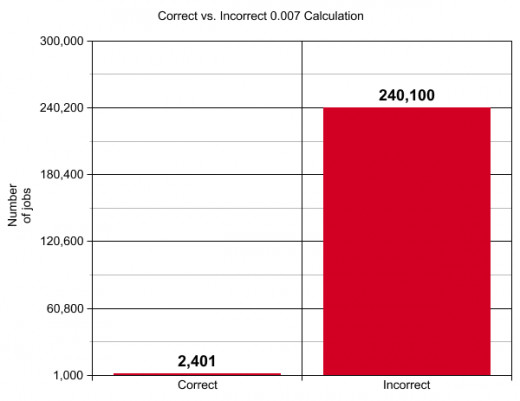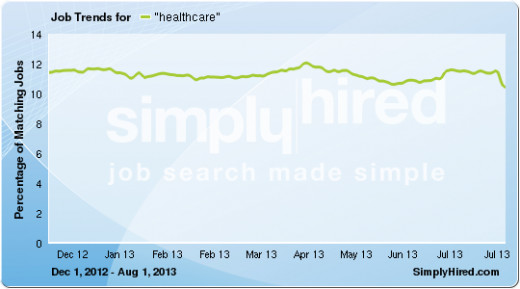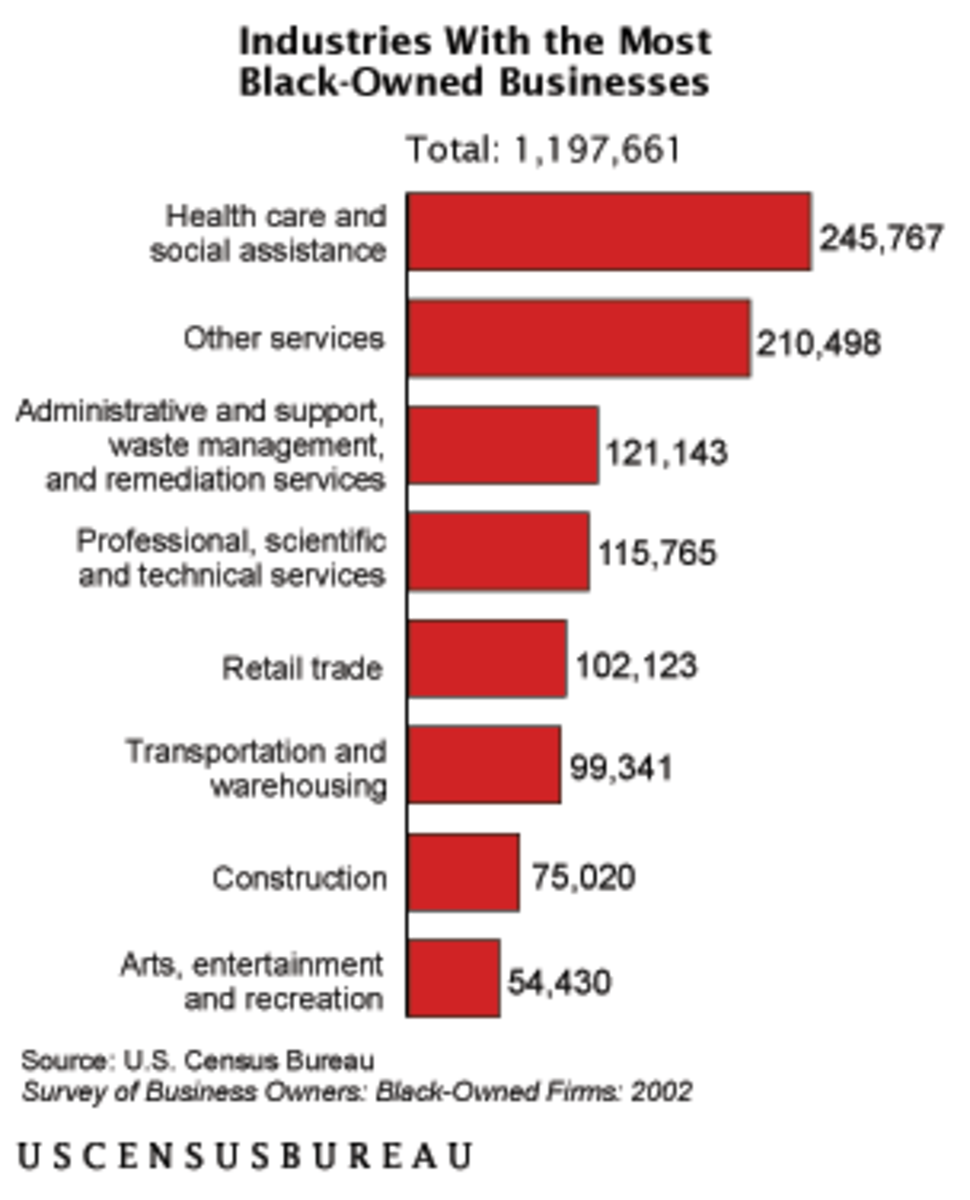Five Industry Sectors NOT To Avoid For Work - The Trouble With Believing Manipulated Stats

Industries That Are Increasing In Jobs, Rather Than Decreasing In Jobs
Several websites have recently listed a group of eight or ten industries to avoid when looking for work, the objection being that jobs are decreasing in these industries. However, this recommendation seems to be incorrect, because these industries are increasing in numbers of jobs available and listed as vacancies on major job search engines.
One glitch in the logic that results in a bottom line of "decreasing jobs" declared in the work mentioned above is that the writers used data from a job search engine that gathers only half or fewer of the numbers of jobs aggregated 24/7/365 by SimplyHired.com during spidering all internet sources of job listings and gathering the different listings, shunning overlap - in this case, the American version of SH, although SimpyHired sites for other countries are linked at the bottom of the first page of the US version.
Another glitch is that some of the data used is old, from 2010 or 2011, but written into articles appearing in Fourth Quarter 2013 and First Quarter 2014. A look at monthly data during the second half of 2013 and early 2014 would likely have solved that glitch.
Top Five Industries Incorrectly Labeled "Declining"
- Information Technology (IT)* - This is incorrect labeling, given the replacement, new. and emerging jobs in aerospace, technologies of numerous fields, engineering, healthcare, and a dozen other industries.
- Retail - In several US States, Retail Sales is increasing and jobs in several related job titles are increasing.
- Healthcare*
- Transportation
- Financial Services and Banking
*Note that while job seekers were/are being warned off the five industries listed here, US News and World Reports listed a Top 10 job titles for which "people are being hired in droves" and all 10 are in IT and Healthcare. See the links, below right.
See also the graphs below for increases in jobs for each of the industries listed above. During First Quarter 2014, each of these industries listed a consistent number of jobs near 1.2 million vacancies each.
Data Concerning the Five Industries Listed Above
Click thumbnail to view full-size




Evidence Of Increase
- US News and World Report Says: "These Jobs Are Hiring In Droves
US News and World Report analysts found the following Top 10 High Demand Jobs. I've included analyses and suggestions. - High-Paid Healthcare Careers
- The Best High Demand and High Paid Jobs to 2020.
United States and United Kingdom data.
Why Are Industries Mislabeled as Declining?
Employment, business and jobs websites sometimes contradict themselves. They sometimes purchase opposing content that maintains that 1.) there are no jobs in America and 2.) there are highly paid jobs just waiting to picked from trees by people who have no college degrees or experience. Such a situation can confuse and frustrate job seekers. It might contribute to a job seeker giving up the hunt for work
Sometimes, the opposing content is posted on the same page of a website, leading people to think, "Which is it?" -- And some readers do not notice the opposition.
A recent round of this confusion is only one of many. I saw a set of articles in which focus was placed on the lowest paid entry level positions within wide industries to discount each the industries in the minds of readers. This works particularly well with readers not adept at using fractions and percentages and without knowledge of the number and types of careers actually available in those industries.
Apparently, a job seeker must use knowledge as a sort of self defense in considering an industry and a career. Then comes the application and interview process, felt to be torture by many Americans.
Pay Range Advisory
Interestingly, PayScale.com, a website cited by one content writer to support claims of salary decreases reports that for
- First Quarter 2014 (1st QTR 2014), average pay across America will rise
- over 1st QTR 2013 by a total of 0.7%.
- This is a 0.007 increase in wages year-to-year and a small increase, but still an increase. Example: $30,000 in salary rose to $30,210; on a weekly basis, the raise might not be noticeable, although it is an increase and not a decrease. Wage increases will become more visible, however, since minimum wage changes in 2014 are significant.
In fact, data at the website shows also that wages have increased on average in the USA every month since January 2013. Further, Federal Minimum Wage rose to $10.10 for federal contract jobs in 2014, followed by the first US State to adopt that rate as state minimum in March 2014: Connecticut.
Why then, should job seekers avoid jobs that previously showed a decrease but now show an increase in both wages and job numbers?
Tricks or Errors to Watch
One recent piece of discouraging web content about jobs seemed to use 1.) old data from three years previous and 2.) an odd presentation of percentages.
Jobs advertised for workers in the USA that appear anywhere on the Internet are aggregated by two major business and employment sites, SimplyHired.com and Indeed.com. Both sites update consistent 24/7/365. Indeed includes fewer numbers of jobs, but encompasses a few thousand that do not appear on SH, so I use both sites together.
For instance, SH advertises over six million jobs today and Indeed presents about two-and-a-half million. This is a high end figure of about 6.5 million jobs total.
In addition to 6.5 million advertised jobs, other jobs are not advertised on the Internet and the entire Underground Economy also has no presence there.
Additional, more detailed and minute data on salaries offered across the United States can be found at Salary.com and other usual-and-customary pay-range sites with searches available by region and city.
An Example: Information Technology (IT)
A writer stated in 2014 that job decreases occurred in IT by "0.70 percent". This is problematic, because:
- The data used was from 2011 and incorrect in 2014 and
- The number "0.70 percent" is too easily misunderstood.
Explanation:
Not realizing that "0.70 percent" is a fraction of a percentage, many readers feel that
"0.70 percent" = 70%. This means that nearly 3/4 of all jobs were lost and is incorrect.
However,
"0.70 percent" = 0.70% = 0.007 of jobs, a drastically smaller amount.
Related Calculations:
0.007 of 100 jobs = 0.70 or 7/10 of one job only (less than one whole job).
- A 70% loss would be losing 70 of the 100 jobs.
- We can see that 7/10 of one job is far smaller than 70 whole jobs.
Also:
- The labor bureau routinely reports jobs in terms of a gain or loss per 100,000; so 0.007 of 100,000 jobs = 700 jobs.
- At this writing, at least 343,000 Computer Engineer jobs are advertised. A 0.007 loss would be a loss of 2401 jobs. However, these jobs are increasing and not decreasing and in any event, 2401 make far less of a loss than the incorrect 70% or 240,100 job loss (see graph below).
A Huge Error Size

Another Example: Healthcare
Another writer reported in 2014 that Healthcare jobs were decreasing in numbers advertised during 1st QTR 2014, but this was incorrect information. Further, the report stated that Healthcare wages were becoming lower and lower every month. This was also incorrect.
Fallacy:
Since Healthcare and Social Services are lumped together in some US Bureau of Statistics reports, the writer seemed to be using the lowest paid positions, which were in Social Services, to claim that the lumped together fields (used as one field) features many wages that are low and becoming lower.
This is untrue of Healthcare. In fact, some lower-paid positions have been upgraded, such as Patient Care Tech, which used to be the lowest paid, minimum wage health aides in a hospital.
This focus on the lowest paid positions in no way touches on the widening fields and higher pay ranges available to RN Nurses - especially travel nurses and related emerging positions in aerospace, Nurse Practitioners (also serving as Physician Assistants in many cities), Physical and Occupational Therapists, high-paid Physicians, Genetic Counselors, and many others.
Moreover, some hospitals hire unit clerks, provide them salaries and benefits, and then reimburse them for RN certification and 4-year degrees as well as to supply paid time off to attend classes.
See Advancing Through Healthcare Careers.
Recommendations
If you or anyone you now has misunderstandings of fractions or percentages, access the mathematics Hubs on HubPages. Many of these articles make mathematics and particularly percentages, decimals, and fractions easy to understand.
In reading employment related articles, look at the qualifications of the writer, the age of the data used, and the manner in which the statistics are presented. Writers can commit errors, but some writers can manipulate statistics in ways that are unfair to their readership.














